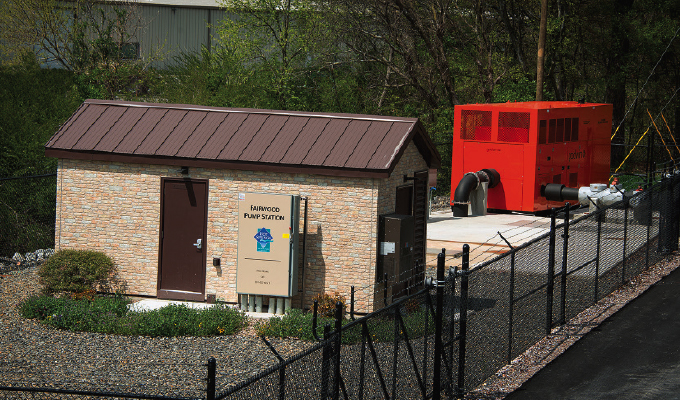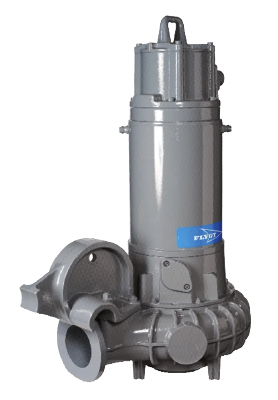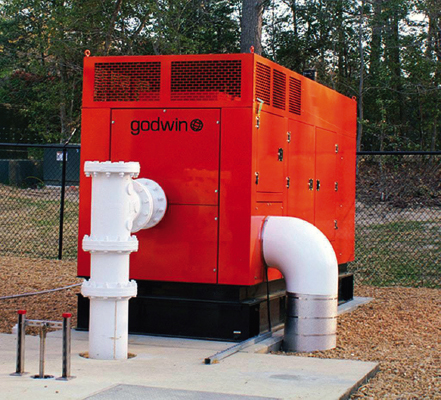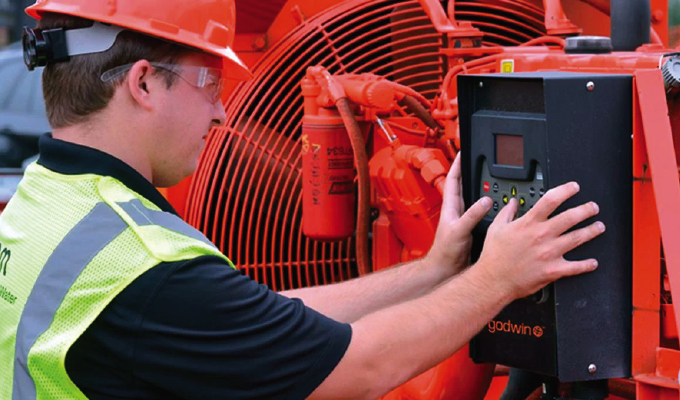The city of Hot Springs, Arkansas, wastewater treatment system serves 23,000 customers and requires the maintenance of more than 600 miles of gravity sewers and force mains. With the goal of implementing a more proactive maintenance program that would also address issues arising from capacity constraints and aging equipment, the city undertook a comprehensive overhaul of its municipal wastewater infrastructure.
As part of the program, Bobby Harris, the city’s utility field operations manager, prioritized the system’s seventy-six lift stations. Several of these stations had been identified as part of a consent administrative order (CAO) between the city and the Arkansas Department of Environmental Quality (ADEQ) in an effort to bring the wastewater system into compliance.

PROJECT SPOTLIGHT
CUSTOMER: Hot Springs, Arkansas
CHALLENGE: The city of Hot Springs sought lift station redundancy within its municipal wastewater infrastructure.
Xylem Solution: The two-story building was designed to withstand the impact of a Category 3 hurricane. The design will allow Sarasota Memorial Hospital and other critical designated storm shelters to remain operational after a storm. City officials directed the project engineer, McKim & Creed, to bring critical equipment above ground to a height above Category 3 storm surge elevation.
THE CHALLENGE
The infrastructure upgrades kicked off in 2013 with the Fairwood Lift Station, which serves as the main collection station for the west side of the city. The lift station, with a peak capacity of 5.8 million gallons per day, experienced frequent overflows. The city identified equipment failure/malfunction and loss of power at the pump station as the primary causes for overflows. The station experienced sewer overflows during heavy rainfall events or when the pumps clogged because of increasingly popular “disposable” products—such as cleaning cloths and disinfecting wipes—which can build up on the leading edge of pump impellers and become tangled. This build-up reduces the efficiency of the pumps or even causes a complete stoppage.
The revamped lift station was equipped with Xylem Flygt Model NP 3231/765 “N” pumps. The 335-horsepower submersible pumps are operated via variable speed drives and are designed to deliver 4,050 gallons per minute each. The technology incorporates patented clog-resistant impellers, unlike the station’s previous pumps.
Realizing that additional steps were needed to properly address long-term prevention of future sanitary sewer overflows, the city of Hot Springs investigated a permanent backup system. They wanted a system that would provide pumping not only during power outages but also during mechanical failures. A system that could also provide additional capacity would be even better. A typical would be to install a diesel-powered backup generator. This solution, however, would not help Hot Springs if the station’s pumps or generator’s switchgear failed—and wouldn’t allow for additional flow capacity brought on by severe rains. The utility also wanted greater flexibility when the submersible pumps were taken offline for any reason.

THE SOLUTION
Instead of a backup generator, the Xylem team recommended a redundant pump system that would provide both mechanical and electrical backup capabilities. The primary benefit of redundant design is prevention of a total system failure. Harris, together with design engineer Jerry Williams, PE, principal of local engineering consultant Engineers, Inc., chose the Godwin Dri-Prime Backup pump unit as a backup for the Fairwood Station.
The benefits of utilizing the natural gas-powered pumping unit in lieu of a diesel-powered electrical generator was introduced to Harris and Williams by Sherman Eoff, president of Jack Tyler Engineering, Inc., the local Xylem representative. Natural gas-powered pumps provide independent and resilient pumping during events when the permanent infrastructure is compromised. Natural gas also provides a continuous uninterrupted
fuel supply, whereas a diesel-powered generator would require a large on-site storage tank or regular fuel delivery. After Harris and Williams researched and compared other offerings, the decision was made to utilize a Godwin DBS station backup instead of just an electrical backup.
Powered by a 425-horsepower natural gas engine, the HL250M DBS pump operates on an above-ground foundation adjacent to the wet well. The heavy-duty pump is well-suited for the backup mission because of its self-priming feature and ability to handle the high discharge pressure and high suction lift conditions at the Fairwood station.
The backup pump is also equipped with a Godwin PrimeGuard controller to provide greater visibility and peace of mind. The controller sends signals to the city’s SCADA system, notifying department personnel when the backup pump is running, so they can initiate a visit to the lift station if needed. Another great benefit to the city is the system’s ability to only activate the backup pump when needed, therefore saving fuel and limiting operating hours.
When a lift station is equipped with a generator, it runs constantly the whole time the power is out, whether the pump station is requiring standby power or not.

THE RESULT
Besides delivering 100 percent redundancy, the Godwin DBS provides convenience. Whenever the primary pumps in the lift station requires repair or maintenance, crews can manually start the permanent backup pump, which is much easier than bringing in one of the department’s portable pumps for a temporary hookup.
In all, six pump stations have been equipped with a backup pumping system using natural gas as part of the ADEQ-mandated, $70 million overhaul of the wastewater system, including the Stokes Creek pump station in 2015 and the Hot Springs I, II, III, and IV pump stations in 2017. The DBS unit at the Stokes Creek station took over operation while the pumps inside the station were down for maintenance. Most importantly, there have been no overflows since the utility installed the DBS units. Even in the most extreme peak-flow weather events, the Godwin DBS is more than adequate to provide protection and coverage, providing additional capacity to handle wet weather flows and pressures when the submersible pumps cannot keep up. As Hot Springs continues to map out its maintenance and upgrade activity, there are plans to retrofit additional lift stations with backup pumping systems.
FOR MORE INFORMATION
Xylem is a leading global water technology company committed to solving critical water and infrastructure challenges with innovation. Xylem’s more than 16,000 diverse employees delivered revenue of $4.88 billion in 2020. Xylem is creating a more sustainable world by enabling its customers to optimize water and resource management, and helping communities in more than 150 countries become water-secure. For more information, visit www.xylem.com.
MODERN PUMPING TODAY, April 2022
Did you enjoy this article?
Subscribe to the FREE Digital Edition of Modern Pumping Today Magazine!



